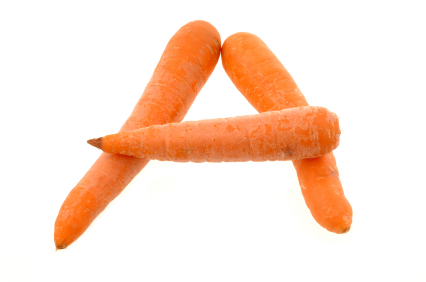Unlike the show Pretty Little Liars, where season after season the elusive “A” remains a mystery, here is one “A” that isn’t hard to find- no detective skills required.
Who: Vitamin A
What skin conditions it can help: Acne, aging, hyperpigmentation, psoriasis, and textural issues.
Where it’s found: Foods high in vitamin A include sweet potatoes, kale, carrots, mangoes, turnip greens, spinach and papaya. Low fat and skim milk, margarine, and cereals are commonly enriched with vitamin A.
For topical uses look for: Vitamin A, retinol, retinoic acid, tretinoin, retinyl palmitate, retinyl actate. Popular prescription brands include Retin-A and Renova.
Why it’s important: Vitamin A is needed for cells to divide and mature, vision, embryonic development, immunity, growth, bone formation, reproduction and wound healing. Vitamin A deficiency manifests itself as dry eyes, night blindness, diarrhea, and skin problems.
How it affects the body and skin: It’s an important antioxidant that protects your body from free radicals. Eating carotenoids from colorful veggies gives the skin a healthy glow. Carotenoids (beta-carotene), found in vegetables helps maintain and repair the skin. *Note: Because Vitamin A is fat-soluble, high amounts can lead to toxicity.
Vitamin A used topically is known as retinol, which speeds up cell turnover and stimulates collagen. Vitamin A can also reduce hyperpigmentation, inhibit enzymes from breaking down collagen, and resurfaces and rejuvenates skin by reducing fine lines and wrinkles, and rough patches.
Happy Tuesday!
Disclaimer: The contents on this website, and any related links, are provided for general informational purposes and should NOT be considered medical advice. The content is not intended to be a substitute for professional medical advice, diagnosis, or treatment. Never disregard professional medical advice or delay in seeking it because of something you have read here. Please consult a healthcare provider if you have any questions about a particular health condition.

[…] effective as you would like it to be. For a guide on how to decipher other names for antioxidants vitamin A, vitamin C and vitamin E, click on each […]